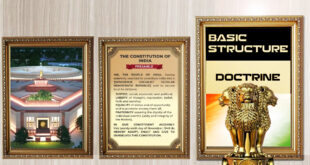Delhi in the cooler months, between early October and late March, once a six-month stretch of mild sunshine, blue skies, crisp air, festivals of every major religious community, associated with agricultural cycles, equinoxes and other natural and cultural punctuations of the annual solar calendar braided with the monthly lunar calendar, lives now only in memory. A pall of the world’s worst air pollution descends on the city at the beginning of what used to be the festive season, and lifts only, if at all, as the harsh summer approaches, bringing with it its own problems of excessive heat and water scarcity. Our lifespans have been shortened, we are told, by sustained exposure to various pollutants, but things have reached a stage where one can only see this as a relief from having to live on in a place no longer fit for human habitation. We cough, gasp and choke our way through these punishing winter months, with poor visibility, skies neither blue nor sunny, and a feeling of being trapped in a long nightmare from which we cannot awaken. A public health emergency engulfs us all, from children with permanently compromised respiratory systems to the elderly struck by lung cancer towards the end of their lives. The persistent itch in our throats and the dull ache in our heads will not go away for weeks at a time. Mornings and evenings are unsafe for walks; any outdoor activity necessitates the use of masks if not inhalers; natural light can only be seen when one leaves town. Eerily simultaneously, a political fog descended on the capital in 2014. Lost cities In late August Ashis Nandy delivered the Daya Krishna Memorial lecture in Delhi, titled “Lost Cities and Their Inhabitants”. He was careful to define and delineate what he meant by “lost”. A “lost city” is one whose past one can remember and relate to; one whose memory as a living city is not overwritten by an episode of final destruction. Thus Hiroshima is not a lost city, since it was completely destroyed in the form in which it had existed by the detonation of an atomic bomb in August 1945. A city may be called lost when people remember its life and not its death. The city as it continues to be and the city’s lost self are, in a sense, discontinuous with one another. Lost cities are autonomous, to use Prof. Nandy’s term, from their real counterparts. He spoke about Bombay and Jerusalem, Cochin and Dhaka, Lahore and Hyderabad, Calcutta and Lucknow. Needless to say, histories of war, genocide and mass migration are implicit in the stories of these cities, and many others in the world, ancient as well as modern. An age passes, sometimes, before our very eyes, and what used to be our home and our haven becomes the site of myth and legend. The past serves our emotional and psychological needs, so that we keep it alive in memory to nourish our desiccated present. But it is not easy to return to or take refuge in a lost city. To try to go there is a kind of madness; to try to keep on living there is to reiterate and perpetuate our trauma of the loss and alienation we experienced when we were overwhelmed by historical forces. Delhi seems to exemplify the lost city. It has had so many lives that perhaps it is always a lost city, from the vantage of any present, looking back at a vanished past which would be but the most recent of a series of receding pasts that disappeared sequentially one after the other. We live in the debris of the Islamicate Sultanates and the Mughal Empire, Lutyens’ city and its Nehruvian descendant. Both its medieval and modernist avatars survive in a hybrid and fragmentary fashion, joined by a colonial hinge, altogether a peculiar but graceful mélange of eras and styles spread out over more than a millennium. Moments of catastrophic transformation — 1857, 1947 — at once break and remake the city, never the same, no going back. For my generation, the line splitting a before and an after in terms of politics is surely 1984. But whatever our identity and our affiliations, we will remember a Delhi not yet laid low by environmental pollution, reckless urbanisation and climate change. We are condemned to struggle for the rest of our days to mentally re-inhabit that idyll of blue sky, green grass, broad avenues, massive trees, a flowing Yamuna, clean air and slumbering monuments. Campus, city, nation The precipitous decline of Delhi has also been playing out in a microcosmic way on the once vibrant and verdant campus of Jawaharlal Nehru University. Led by a Vice Chancellor almost Shakespearean in his animus against the university in his charge, JNU has been on its own death march for the past three years. The university administration has declared war on students, faculty and non-teaching staff alike, attacking the institution from within on all fronts, ranging from the pedagogic, the intellectual and the ideological to the financial, the bureaucratic and the infrastructural. Teaching, learning and research are no longer permitted. A blanket of hazardous particulate matter coats the red brick buildings and the wild forest in which they are set; hapless denizens can scarcely remember what a normal academic year felt like.
Source : https://www.thehindu.com/todays-paper/tp-opinion/metropolis-of-the-mind/article25785539.ece
 Chinmaya IAS Academy – Current Affairs Chinmaya IAS Academy – Current Affairs
Chinmaya IAS Academy – Current Affairs Chinmaya IAS Academy – Current Affairs



